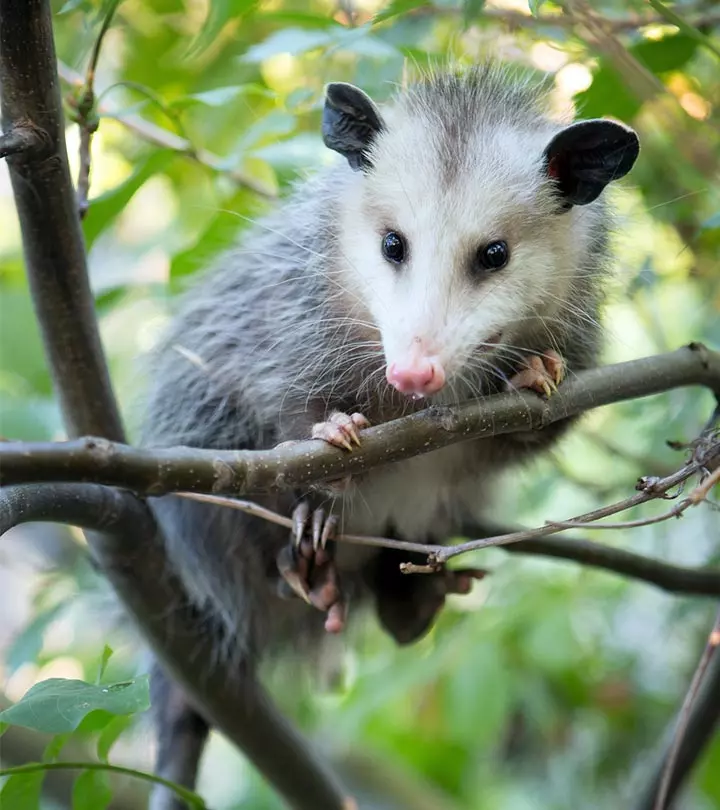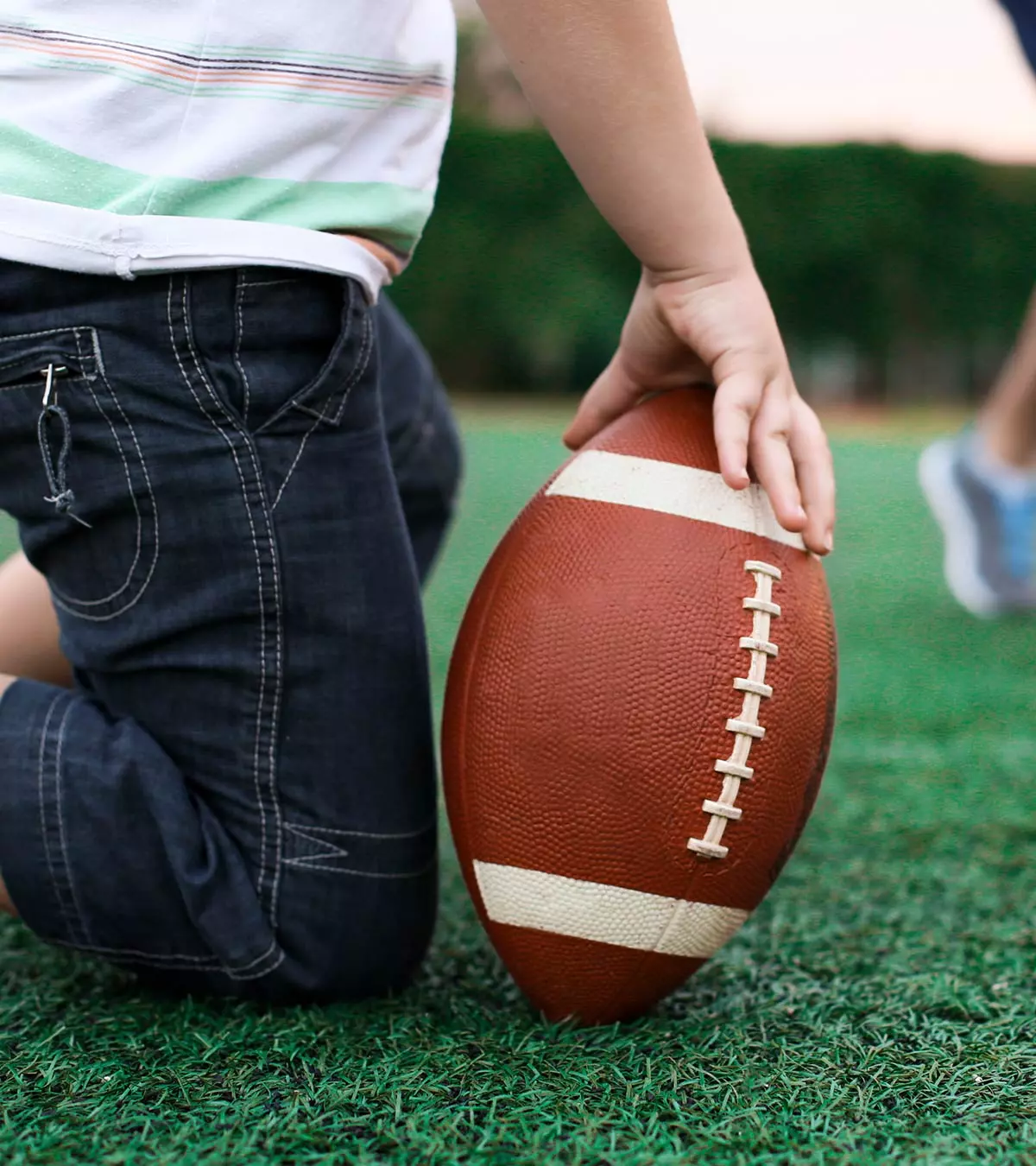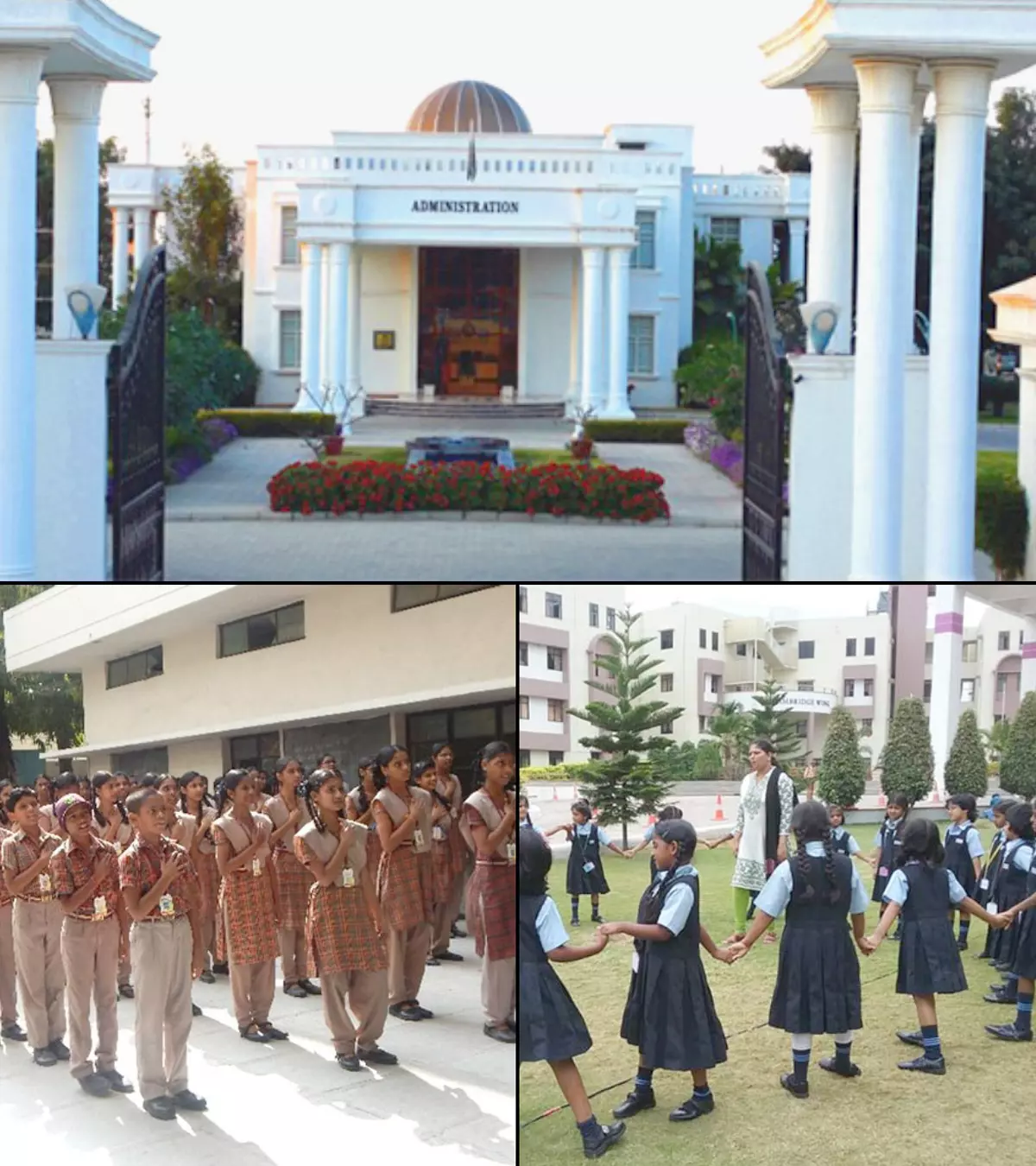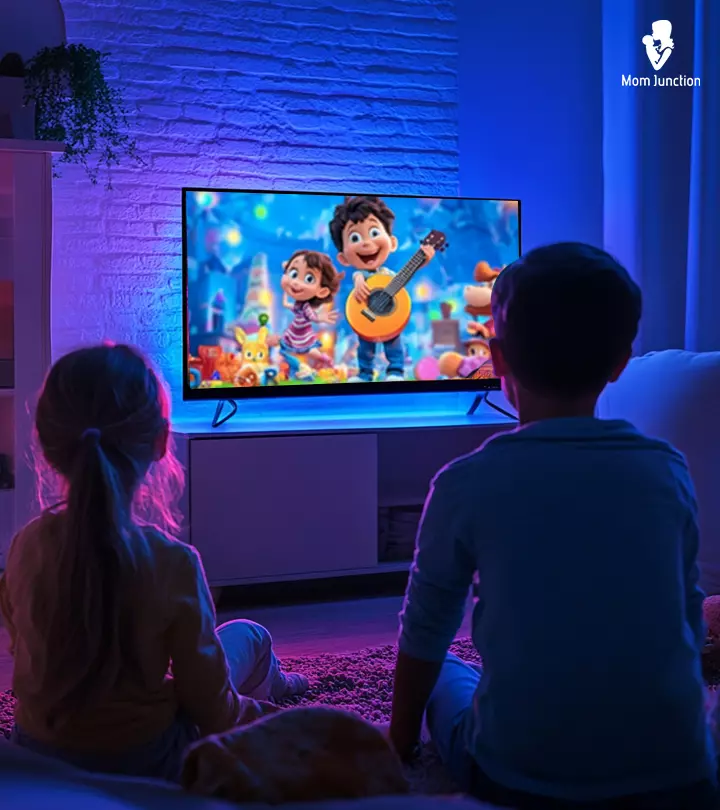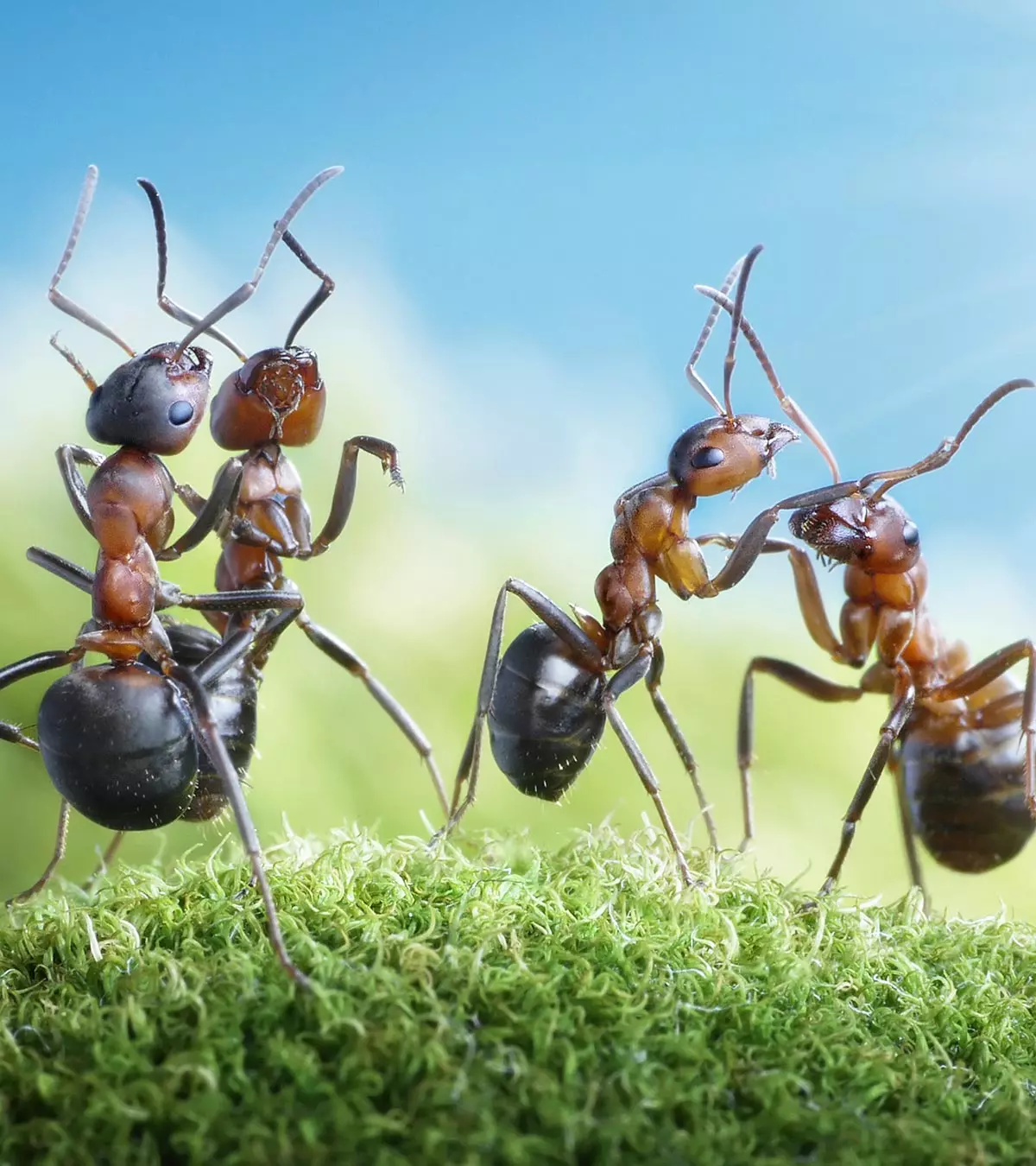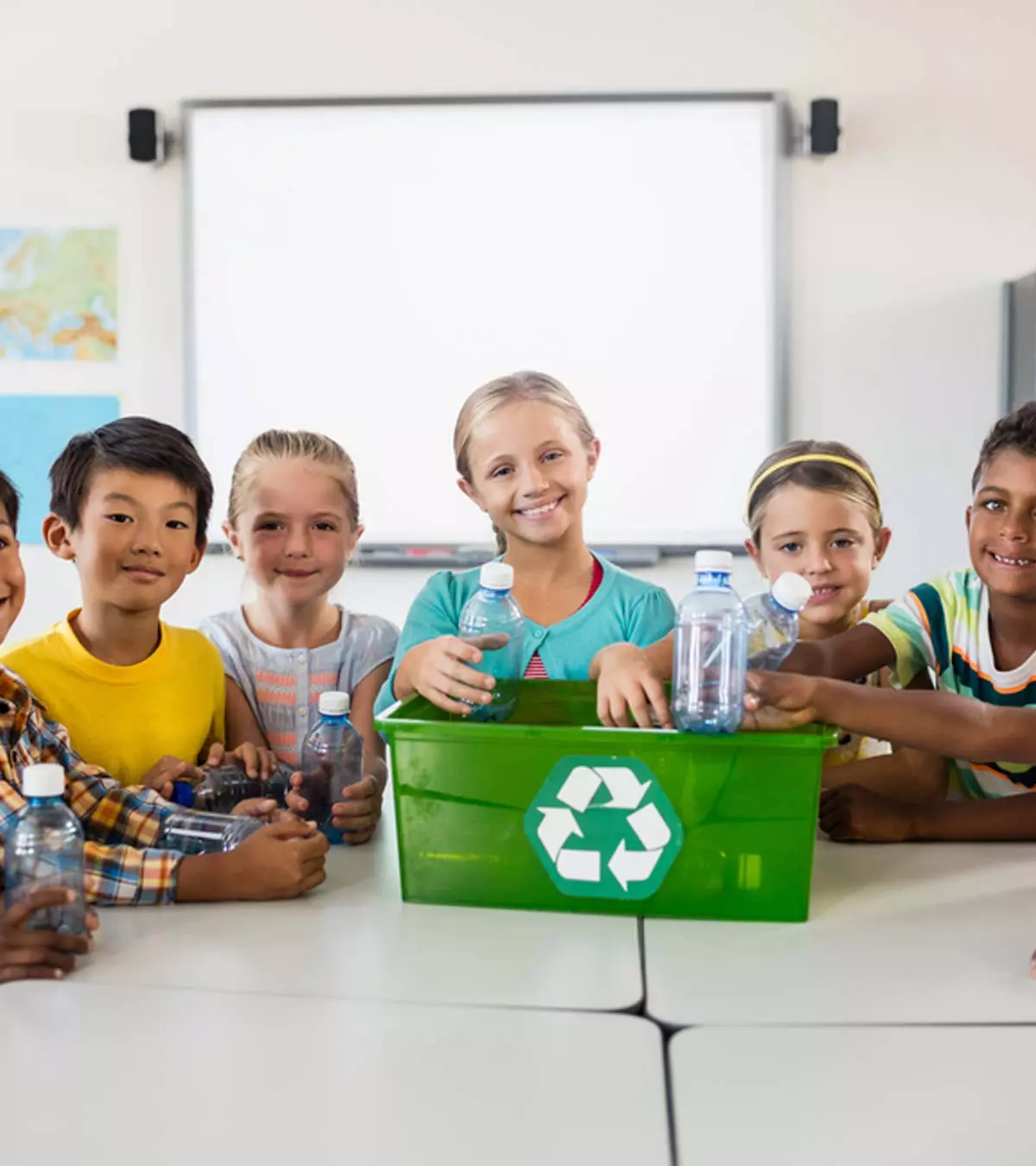
Image: Shutterstock
Waste management is a major challenge that the world is currently dealing with. Understanding the concept of Reduce, Reuse, and Recycle for kids is the first step toward successful waste management. Children such as toddlers and preteens should be taught the importance of protecting and conserving our resources. To keep our planet from becoming a garbage dump, we must all do our part by raising awareness among children for a brighter tomorrow. Globally, around two billion tons of municipal solid trash is generated annually (1). The garbage produced is enough to fill 800,000 Olympic-sized swimming pools (2). Change is supposed to begin at home, and managing waste at home and letting your child know about waste management can be your first step toward making our earth a cleaner and greener planet. Therefore, proper waste management at home can aid in the reduction of global garbage. In this post, we present some effective steps to teach the importance of reducing, reusing and recycling to kids.

Key Pointers
- Reduce refers to limiting the waste created by reducing purchasing and consumption.
- Reuse is using a single item multiple times and in different ways.
- Recycling is a concept of creating new things from old, broken, or used materials.
What Do The Terms ‘Reduce, Reuse, and Recycle’ Mean?
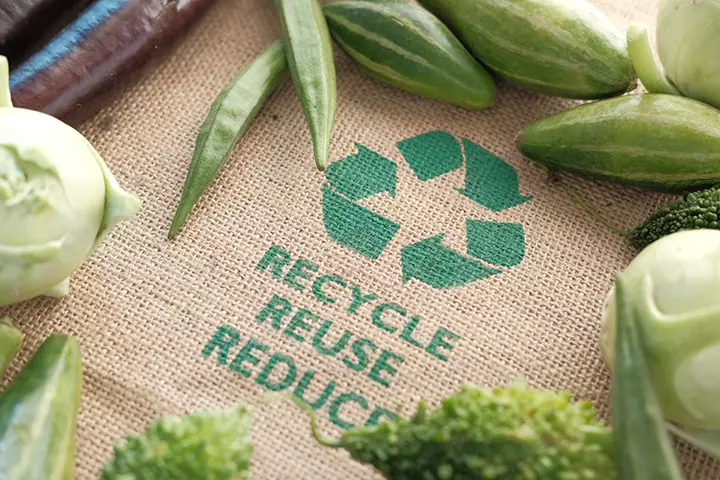
Reduce means to decrease the garbage we create by limiting your purchases and consumption. This is a simple and best way to reduce waste and thereby eliminate the cause itself. Teaching the minors how to cut back or trim down their purchases is the first step towards avoiding wastage and making them understand the concept of “reduce”.
Change at home can begin by following simple steps. Switch off the electric and electronic devices when not in use, take only the amount of water you want to drink, and close the taps while applying soap or brushing. Further, start encouraging your children to use non-polluting, durable, and recyclable materials.
Reuse means using the same item more than once rather than discarding it. There are several ingenious ways to reuse, revamp, and repurpose used items. For instance, you can reuse broken dishes, plastic containers, or empty glass bottles as flower pots or vases. You can renew and reuse takeaway paper coffee cups as pen or pencil holders. Apart from saving the environment, reusing and repurposing used items in creative ways can be a fun activity for children.
Recycle is a method of creating new items from used materials or old products. Sometimes products like opened soda cans, soft drink bottles, broken parts of bicycles, etc., cannot be reused. These materials can then be recycled and sold again.
 Quick fact
Quick factInculcating the values of these 3Rs in your children is not a one-time activity. You need to consistently reinforce waste management values. Getting these in your daily regime, regularly celebrating days like World Earth Day and World Environment Day, and taking part in Earth Day activities for kids are some ways of reaffirming the message.
Benefits Of 3Rs For Kids
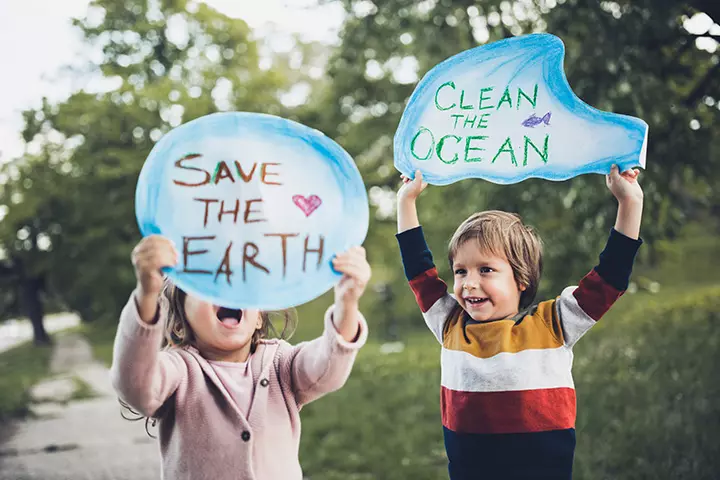
- Sensitizes them towards environmental issues: Educating the future generation about the need to safeguard and conserve the environment is paramount. Children are naturally empathetic. Teaching them to follow the three Rs in managing waste early on will make them conscious youths and go a long way in keeping the environment clean and the planet a safe place to live.
- Teaches discipline: Understanding and following the concepts of Reduce, Reuse, and Recycle will make the children more disciplined. The concept of “reduce” will teach them the importance of saving. Children will realize that they should not discard food or toys, or wastewater. They will know the difference between need and want.
- Makes them responsible: Following the principles of 3Rs in the house involves performing numerous tasks. Parents can lead by example and demonstrate the process of reusing or recycling used items or materials to their children. They can assign simple tasks to their little ones. This way, children will gradually learn the tasks, which will increase their sense of independence and boost their confidence.
- Inculcates values: The concept of 3Rs encourages the donation of clothes and toys to shelter homes. This will teach children how to retain resources and give back to society. Passing on the clothes to the siblings will educate them about sharing.
- Develops creativity: Parents can make the process of repurposing waste a fun activity and exciting for children by suggesting creative DIY projects. You can try activities like painting the glass bottles to turn them into colorful flower vases, using tin cans to make wind chimes, and turning old socks and clothes into soft toys.
- Promotes teamwork and social skills: Participating in group activities focused on the 3Rs helps children learn to collaborate and communicate with peers.
Teaching Children How To Reduce

Some simple steps will help your little ones understand and incorporate the concept of reduction in their lives.
- Show them how to serve food without spilling.
- Teach them the value of food.
- Teach your children how to store leftover food items in the refrigerator.
- Show them how to use notebooks and drawing books effectively by using both sides of the paper.
- Teach your children about the hazard of using plastic. Encourage them to avoid using plastic bags.
- Educate them about carrying reusable bags while grocery shopping.
- Teach them the importance of purchasing products that are durable to avoid buying often.
- Educate your children about bulk buying to reduce the amount of packaging waste. Products like biscuits, chips, breakfast cereals, and toffees can be brought in bulk.
- Encourage them to carry tap water in reusable water bottles instead of buying bottled water. Restrain them from buying drinks sold in plastic containers.
- Teach them to carry school lunches from home in reusable lunch boxes instead of plastic bags. Discourage them from buying single-serve food items sold in plastic containers or bags.
- Educate your children to avoid drinking from Styrofoam cups as this is a form of plastic.
- Let them carry cloth napkins from home instead of using paper towels or tissue papers.
- Show your children how to grow vegetables and fruits in the backyard to regenerate their own resources and minimize buying them from grocery stores.
- Make them avoid buying products with extra packaging to reduce waste generation.
- Before creating the new school year’s shopping list, encourage your children to check out the previous year’s materials that can be reused.
- Teach your children to avoid disposable cutlery.
Teaching Children How To Reuse
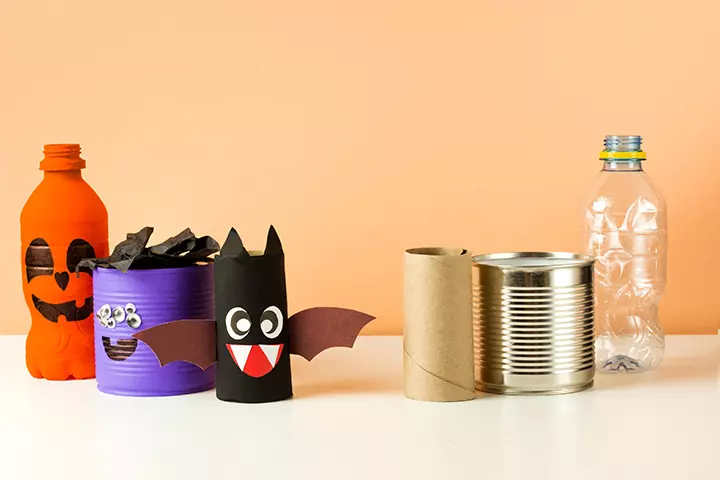
Reusing can be a fun activity through simple and innovative ways to repurpose things.
- Show your children how to mend clothes, shoes, toys, or appliances wherever possible instead of discarding them and purchasing new things. Jeans or trousers that have been torn at the knees can be modified into shorts.
- Introduce them to buying second-hand things from yard sales, thrift shops, or online.
- Let them reuse the gift-wrapping paper for packing gifts for others or craft projects.
- Engage children in waste material crafts for kids to teach them about the three Rs. You can show them creative and innovative ways to reserve empty packing containers, bottles, paper cups, and boxes and transform them into craftwork or science work.
- Encourage them to donate old toys and clothes to orphanages or shelter homes.
- Teach them how to use old baby blankets, socks, and colorful clothes to make soft toys, tote bags, or furniture covers. Old loved t-shirts can be remade into pillow covers or pillows, re-purposing the shirt if it has special meaning.
- Inspire them to transform broken crayon pieces into colorful and pretty candles.
- Show them that reusable plastic containers can be used to keep coins, pebbles, clips, pins, and other household items.
- Teach them to print on both sides of the paper while taking a printout. You can use the blank side for calculations, making lists, scrap paper, or doodling,
 Did you know?
Did you know?- Encourage them to join ‘best from waste’ workshops at school.
- Communicate to your children the importance of conserving water and teach them how the bathwater or water from the washing machine can be used for cleaning floors, flushing toilets, or washing cars.
Teaching Children How To Recycle
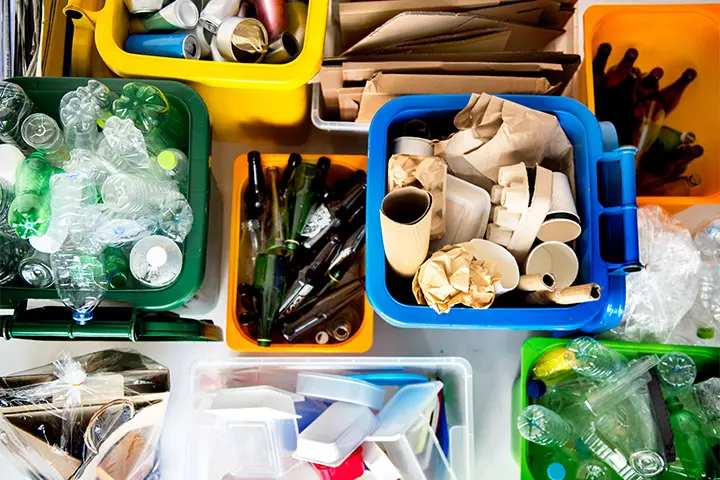
About 300 million tonnes of plastic is generated annually (3). However, the world has managed to recycle only 9% of all the plastic waste ever generated (3). While 12% is burned, 79% of the total plastic gets collected in landfills, dump yards, or the natural environment (3).
- Educate your children about the importance of recycling and explain the process to them.
- Teach your children about materials that can and cannot be recycled.
In general, materials which can be recycled are:
- Paper and cardboard such as newspaper, magazines, office paper, cereal boxes, and snack cardboard boxes
- Glass jars, containers, soft drink or beer bottles
- Hard plastic bottles without a lid, found in the kitchen
- Metals like aluminum, tin, and steel cans
Materials which cannot be recycled are:
- Loose plastic bags like shopping bags, plastic wraps, or bubble wrap
- Polystyrene material such as coffee cups, drinking cups, egg cartons, takeout containers
- Soiled food-related items like containers or paper products
- Wax paper, tissue paper, paper towels
- Broken glass, light bulbs, mirror glass
- Medical waste
- Plastic utensils
- Waxed cardboard
- Motor oil cans
- Ceramic, marble, and crystal
- Maintain separate dustbins for recyclable and non-recyclable items and teach your little ones to dispose of recyclable items into the recycling bin. Appoint them to do the task and encourage them with rewards.
- Check for the recycling programs in your area and encourage your children to participate in them.
- Avoid buying gift wrapping paper as it cannot be recycled due to its shiny coating. Instead, use recyclable gift wrapping paper, cloth or towels that can have several uses, or colorful boxes for gifting (4).
- Food waste can be recycled by setting up a compost bin in your backyard. Demonstrate the process and highlight the multiple benefits of composting for kids. For apartment living, there are kitchen compost containers that are mini-versions of yard composters.
- Teach your children to identify products that are made from recycled materials while shopping. These products are labeled as ‘Made from recycled material.’
- Inspire them to participate in environmental initiatives organized by their schools.
Mrs. Row Crowder, a kindergarten teacher, shares how she teaches her students the concepts of recycling, reusing, and reducing the waste on this earth. She says, “We started out the week by learning that the Earth is sick and we can help it…After reading we learned more about reduce, reuse, and recycle. I taught them a Reduce, Reuse, and Recycle song. The next day we started putting our knowledge of the three r’s to use by making art work from reusable trash. I had sent home a note the weekend before for families to send reusable trash to school. We pulled out some of the trash materials and decided what pieces we could use to make trees. It was completely up to them to pick what they wanted to use.
“We also reused a lot of the materials to create monsters, robots, puppets, etc. We also learned to recycle. I found this random recycle machine at Walmart on clearance several years ago and use it every year for Earth Day. My cuties had to tear or cut old paper and then we placed it in the machine. We took turns spinning it. After we finished spinning, we pushed the gooey paper into a mold to shape it like a star. While it was drying, we did some interactive writing about the steps to make the recycled paper. We also learned to reduce…Then we drew and wrote we could do to reduce the amount of energy we use (i).”
Frequently Asked Questions
1. Is generating heat and power from waste considered a green initiative?
Generating heat and power from waste (recovery) is placed under reduce, reuse, and recycle but above disposal in the waste hierarchy. How green the method depends on the plant used and the amount of biodegradable waste (5).
2. What will happen if we don’t reuse?
Reusing is considered better than recycling because energy is not spent on reconstructing the product. It also ensures less waste is generated, and fewer raw materials are used for production. Therefore, a lack of reusing can risk the depletion of forests and other natural resources.
3.What age group is most suitable to learn about Reduce Reuse Recycle?
You can introduce your child to the basics of environmental sustainability from a young age. Children between three and six years can begin learning the importance of conserving resources and caring for the environment. As they age, they can learn about the 3Rs in detail and incorporate habits that inspire and encourage others to embrace their environmental responsibilities. Remember, children learn through imitation. So, follow the 3Rs at home to help your child follow in your footsteps.
4. What tips can educators use to make Reduce Reuse Recycle lessons more engaging and fun for kids?
Educators can organize hands-on activities where children can make items using recycled materials. In addition, they can develop recycling games and activities for kids and arrange field trips to recycling centers or environmental organizations to increase children’s awareness about the judicious use of resources to minimize waste generation.
5. How can Reduce Reuse Recycle lessons be incorporated into the school curriculum?
Schools can include specific waste management units or modules to teach children ways to reduce waste generation. They can invite guest speakers, such as environmentalists, to share their knowledge and experiences on responsible waste disposal. In addition, schools can place separate bins for different types of recyclable materials so that students learn ways to properly sort and recycle these items. They can also encourage student-led waste awareness initiatives to actively reduce waste generation.
The concept of reduce, reuse, and recycle for kids should be taught to them from a young age. To incorporate a new responsible mindset in children, you should follow the concept at home too, because the foundation for good habits starts at home. So, not wasting food, carrying reusable bags, and growing vegetables are some habits parents should teach their children. You can also encourage them to reuse gift wrapping papers and donate toys. Make them aware of the things that can or cannot be recycled. Inculcating these habits in children will make them sensitive to environmental issues.
Infographic: Easy Ways Children Can Reduce, Reuse, And Recycle
Children are the future of this planet, so what better way to love this planet than by teaching future generations to save it and preserve its resources? So try out the fun and effective ways below to engage them in reducing, reusing, and recycling waste while learning about their importance.
Some thing wrong with infographic shortcode. please verify shortcode syntax
Illustration: Simple Steps To Teach Reduce Reuse Recycle For Kids

Image: Dall·E/MomJunction Design Team
Learn about the 3 R’s – Reduce, Reuse and Recycle. With this fun educational video, help your kids understand how they can make a difference in conserving the environment.
Personal Experience: Source
MomJunction articles include first-hand experiences to provide you with better insights through real-life narratives. Here are the sources of personal accounts referenced in this article.
i. Earth day… Hooray!https://sprinklestokindergarten.blogspot.com/2012/04/earth-day-hooray.html
References
1. What a waste 2.0, A Global Snapshot of Solid Waste Management to 2050, The World Bank
2. Global Waste Crisis: A Rising Threat to Environment, Modern Diplomacy
3. Our planet is drowning in plastic pollution, UN Environment
4. How Do I Recycle?: Common Recyclables, EPA, United Environmental Protection Agency
5. Generating energy from waste: how it works, Energy Saving Trust
Community Experiences
Join the conversation and become a part of our nurturing community! Share your stories, experiences, and insights to connect with fellow parents.
Read full bio of Katherine Paxton
Read full bio of Bharathi V
Read full bio of Harshita Makvana
Read full bio of Kavita Kankani





